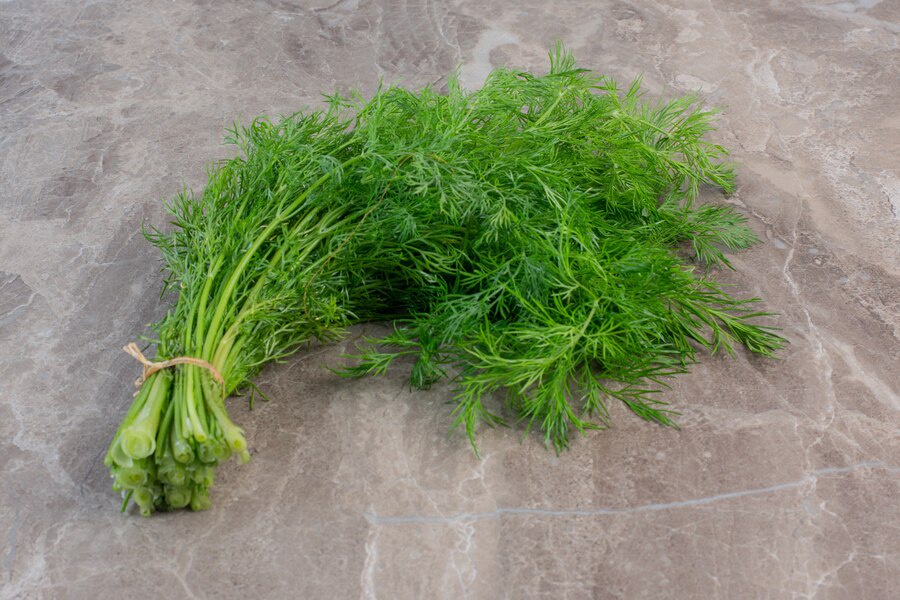Dill, an aromatic herb with feathery leaves and delicate yellow flowers, is a flavorful addition to various dishes and a delight to grow in your garden. Whether you're an experienced gardener or just starting, cultivating dill from seeds is a rewarding experience. This guide will walk you through growing dill, its various growth stages, ideal companion plants, and essential care tips to ensure a bountiful harvest.
How to Grow Dill from Seeds:
Growing dill from seeds is relatively straightforward and can be done directly in your garden or containers. Here's a step-by-step guide on how to grow dill.
- Selecting Seeds: Choose high-quality dill seeds from a reputable supplier or harvest them from mature dill plants in your garden.
- Choosing a Location: Dill thrives in well-drained soil and requires full sunlight. Choose a spot in your garden that acquires at least 6-8 hours of sunlight daily.
- Preparing the Soil: Ensure the soil is loose, fertile, and well-drained. Add organic matter, such as compost, to increase soil texture and fertility.
- Sowing Seeds: Plant dill seeds directly into the soil at a depth of ¼ to ½ inch (0.6-1.3 cm). Space the seeds 12-18 inches (30-45 cm) apart to allow ample room for growth.
- Watering: Maintain the soil moist but not saturated during germination, which usually takes 7-14 days.
- Thinning Seedlings: Once the seedlings emerge, thin them to ensure proper spacing, leaving the healthiest plants to grow.
Dill Growing Stages:
Understanding the dill plant growing stages is essential for successful cultivation. Here are the primary stages:
- Germination: The first stage begins when the seeds germinate, sending delicate shoots.
- Seedling Stage: Seedlings develop their first set of true leaves and establish their root systems.
- Vegetative Growth: During this stage, dill plants increase, producing abundant feathery foliage.
- Flowering and Seed Production: Dill plants produce umbrella-shaped flower clusters, followed by the formation of seeds.
- Harvesting: Depending on your preference, you can harvest dill leaves, seeds, or both for culinary use.
Companion Plants for Dill:
Dill is a beneficial companion plant that can enhance the growth and flavor of neighboring crops while deterring pests. Consider planting dill alongside the following:
- Tomatoes: Dill attract beneficial insects that prey on tomato pests like aphids and hornworms.
- Cabbage: Dill helps repel cabbage worms and attracts pollinators, which are essential for cabbage flower development.
- Lettuce: Planting dill near lettuce can deter pests such as aphids and attract beneficial insects like ladybugs.
How to Care for Dill:
Proper care is essential for healthy dill plants and a bountiful harvest. Here are some basic dill care tips:
- Watering: Keep the soil moist, especially during dry periods, but avoid overwatering to prevent root rot.
- Fertilization: Dill is a light feeder and generally does not require heavy fertilization. However, if needed, you can apply a balanced fertilizer once or twice during the growing season.
- Weeding: Regularly remove weeds around dill plants to prevent competition for nutrients and moisture.
- Pest and Disease Management: Monitor plants for signs of pests such as aphids or diseases such as powdery mildew. Use organic pest control methods, such as insecticidal soap or neem oil.
- Harvesting: Harvest dill leaves when young and tender for the best flavor. For seeds, wait until the flower heads have turned brown and begun to dry out before harvesting.
Conclusion:
Following these guidelines, you can grow dill in your garden and enjoy its fresh, aromatic flavor in your culinary creations. Whether fresh or dried, dill adds a unique touch to salads, soups, sauces, and more, making it a valuable addition to any herb garden.


No comments yet